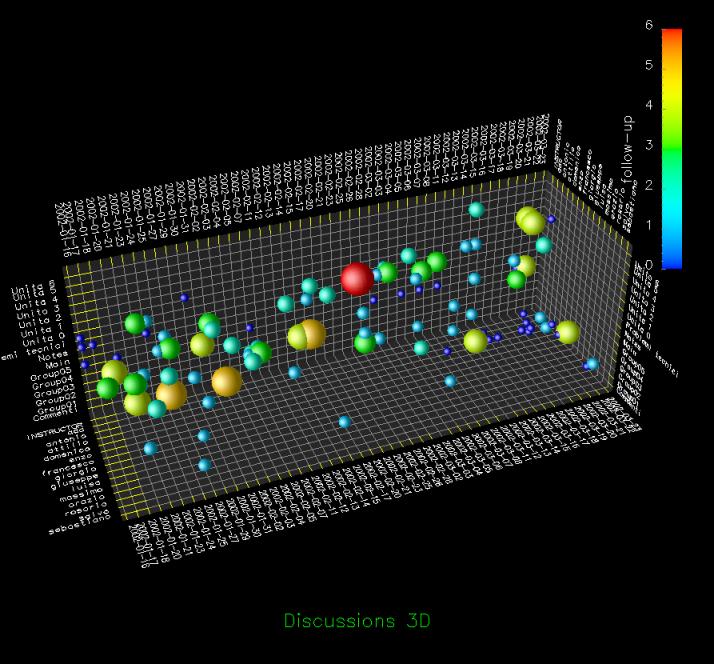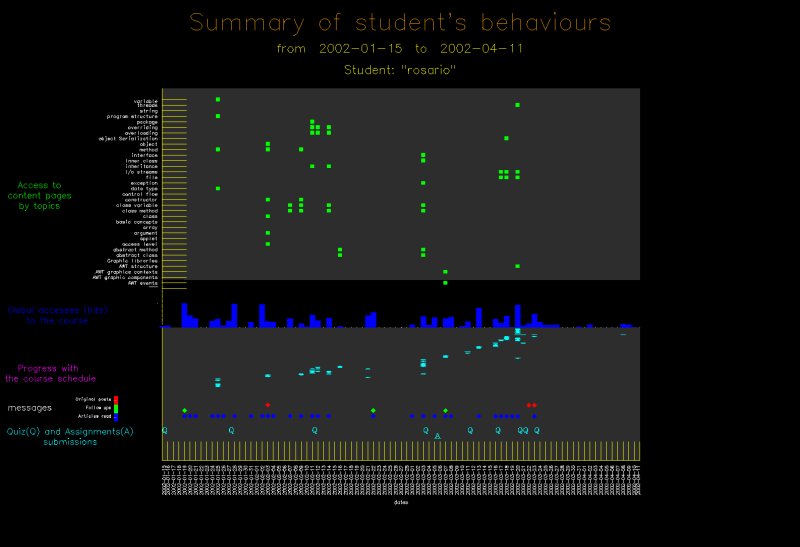Evaluating Information Visualization Applications: Difference between revisions
No edit summary |
No edit summary |
||
| Line 41: | Line 41: | ||
* Controlled Experiment | * Controlled Experiment | ||
* Semi-structured Interview | * Semi-structured Interview | ||
{{Quotation|The focus group and the semi-structured interview aimed to assess the usefulness of the graphical representations generated in CourseVis, while the experimental study aimed at verifying the effectiveness and the efficiency of the representations.| [R. Mazza, 2006]}} | <br />{{Quotation|The focus group and the semi-structured interview aimed to assess the usefulness of the graphical representations generated in CourseVis, while the experimental study aimed at verifying the effectiveness and the efficiency of the representations.| [R. Mazza, 2006]}} | ||
== Important Citation == | == Important Citation == | ||
Revision as of 20:37, 26 April 2007
Author
Short Description
CourseVis
Figures
The following visualizations are used to represent the collected data from CourseVis:
- Access Plot:
The access plot shows the students' accesses to the course. It is an mixture of a scatterplot and a histogram.
The scatterplot shows the data of students and of the course while the histogram shows the number of pages of the course accessed by all students on a special date.

- Discussion Plot:
This 3D scatterplot is about the disussions of the course. The figure shows time, topics and students.
The sphere represents a new thread and the number of messages are encoded with the color and size of the sphere.

- Behavioural Graph:
This graph represents the behaviours of a single student.
It shows the student's access to the content pages, the global access to the course, a progress with the schedule of the course, messages and the submission of quizzes and assignments.

Evaluation Types
- Focus Group
- Controlled Experiment
- Semi-structured Interview
Important Citation
via the social gathering and the interaction which being in a focus
group entails